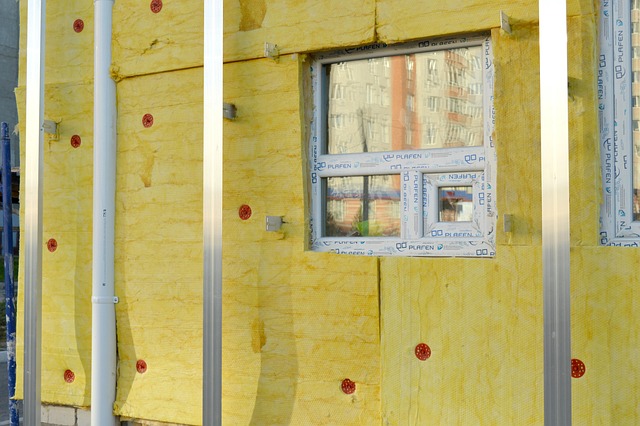In the age of high‑definition televisions and ultra‑responsive displays, the boundary between audio and visual art has become increasingly porous. What once was a simple side‑by‑side pairing of sound and image now offers an immersive, synesthetic experience where the rhythm, harmony, and timbre of a performance are rendered in vibrant colors, shapes, and motion. For the practicing music critic, this convergence presents a new set of tools and questions: How does the visual representation influence the interpretation of a piece? Does the immediacy of on‑screen visualization enhance the emotional impact, or does it risk diluting the subtlety that a live, acoustic environment traditionally affords? The answer lies in a careful examination of the technologies that underpin this phenomenon, and in a thoughtful critique that balances technical analysis with artistic insight.
From Cathode Ray to Quantum Dot: The Evolution of Display Technology in Music Analysis
Historically, the first attempts at visualizing sound were rudimentary, relying on oscilloscopes and frequency analyzers that produced line drawings of waveforms. These early screens were monochrome CRTs with limited refresh rates, offering a static snapshot of the sonic landscape. With the advent of LCD and OLED panels, the fidelity of visual output increased dramatically. Modern displays now boast native resolutions of 4K and 8K, wide color gamuts, and sub‑60‑Hz refresh rates that can render the rapid transients of a snare hit or a flute trill with astonishing clarity.
- Color accuracy: The expanded color spaces (e.g., DCI‑P3, Rec. 2020) allow visualizers to assign hues to specific frequency bands or musical modes, creating a richer, more nuanced mapping.
- Latency: Advances in panel response times and processing pipelines have reduced the lag between audio input and visual output to less than 10 milliseconds, a critical threshold for real‑time performance feedback.
- High dynamic range: HDR capabilities ensure that subtle differences in amplitude are not lost, mirroring the dynamic range found in professional recordings.
Visualization Techniques That Shape Critical Reception
Music criticism often hinges on an evaluator’s ability to perceive and articulate the structural nuances of a composition. Visualization techniques now provide an auxiliary channel for that perception, allowing critics to “see” elements that might be invisible to the ear alone.
“When a visualization aligns the visual peaks with the sonic peaks, the listener’s attention is guided in a way that reinforces the musical narrative.” – AudioTech Review
Three dominant visualization paradigms dominate contemporary practice:
- Waveform overlays: These display the raw amplitude envelope of a track, enabling the critic to spot crescendos, dynamic swells, and rhythmic precision.
- Spectral bars: By representing frequency content as a series of vertical bars, this method helps in assessing harmonic complexity and timbral balance.
- Motion graphics: More experimental, these render musical phrases as flowing shapes or particle systems, offering an almost abstract representation that invites interpretive speculation.
The Role of Monitors in Live Performance Critique
Beyond studio analysis, modern monitors have become indispensable in live settings. High‑fidelity, color‑accurate displays enable sound engineers and performers to monitor audio levels and visual cues simultaneously. For the music critic attending a live show, the monitor’s fidelity can influence the clarity with which one perceives subtle ensemble interactions.
Consider the following aspects:
- Display size and ergonomics: A large, curved screen positioned at an optimal angle can reduce visual fatigue, allowing the critic to maintain focus over extended periods.
- Software integration: Many monitors now run dedicated visualization software that syncs directly with the venue’s audio system, providing real‑time spectral analysis.
- Ambient light compensation: Adaptive brightness and contrast settings ensure that the visual output remains clear even in brightly lit venues.
Case Study: Visualizing a Modern Symphony
During a recent performance of a contemporary symphony, the conductor employed a custom visualization that mapped the orchestra’s string section to a flowing ribbon of green, while brass was rendered in bold red. Percussion elements flickered in a staccato yellow. This visual layering allowed the critic to track the interplay between sections more intuitively than by ear alone.
“The ribbon effect provided a visual analogue to the musical phrases, making it easier to anticipate harmonic shifts.” – The Soundscape Journal
Such integrations demonstrate how modern display technology can act as an extension of the critic’s auditory perception, offering an additional dimension through which to assess compositional structure.
Challenges and Ethical Considerations in Visualized Music Criticism
While the allure of visually assisted criticism is strong, it also introduces potential pitfalls. The risk of over‑reliance on visual cues can lead to a form of “visual bias,” where the critic’s interpretation is unduly shaped by the aesthetics of the display rather than the intrinsic musical content.
Key concerns include:
- Artistic integrity: Visualizers may impose a particular narrative onto a piece, effectively editing the listening experience.
- Transparency: Critics must disclose the visualization tools and parameters used, ensuring that readers understand the context of the analysis.
- Accessibility: Color‑blind users or those with visual impairments may not benefit equally from color‑based visualizations, calling for alternative representations.
By acknowledging these issues, critics can maintain credibility while leveraging the strengths of modern displays.
Future Directions: AI‑Driven Visualization and Immersive Audio‑Visual Critique
Artificial intelligence is rapidly transforming how we generate and interpret visualizations. Machine learning algorithms can analyze large datasets of recordings, extracting patterns and generating dynamic visuals that adapt to real‑time performance nuances.
Potential developments include:
- Predictive visual cues: AI can anticipate upcoming harmonic progressions and display corresponding visual hints, offering a pre‑emptive insight into the music’s trajectory.
- Personalized visualization profiles: By learning a critic’s preferences, AI could tailor the color schemes and motion styles to match individual perceptual strengths.
- Virtual reality integration: Immersive environments can situate the critic within a 3D audio‑visual space, creating a holistic experience that blends sight and sound in unprecedented ways.
These advancements promise to deepen the synergy between audio technology and music criticism, expanding the boundaries of how we evaluate and experience music.
Conclusion: Harmonizing Sight and Sound in Critical Practice
The marriage of modern display technology with music criticism offers a powerful avenue for enriched analysis. By carefully integrating visual elements—while remaining vigilant against bias and ensuring accessibility—critics can unlock new layers of interpretation. As TVs evolve into sophisticated audio‑visual platforms, the role of the critic will similarly shift from purely auditory evaluator to multimedia interpreter, shaping audiences’ understanding of music in an increasingly connected sensory landscape.



